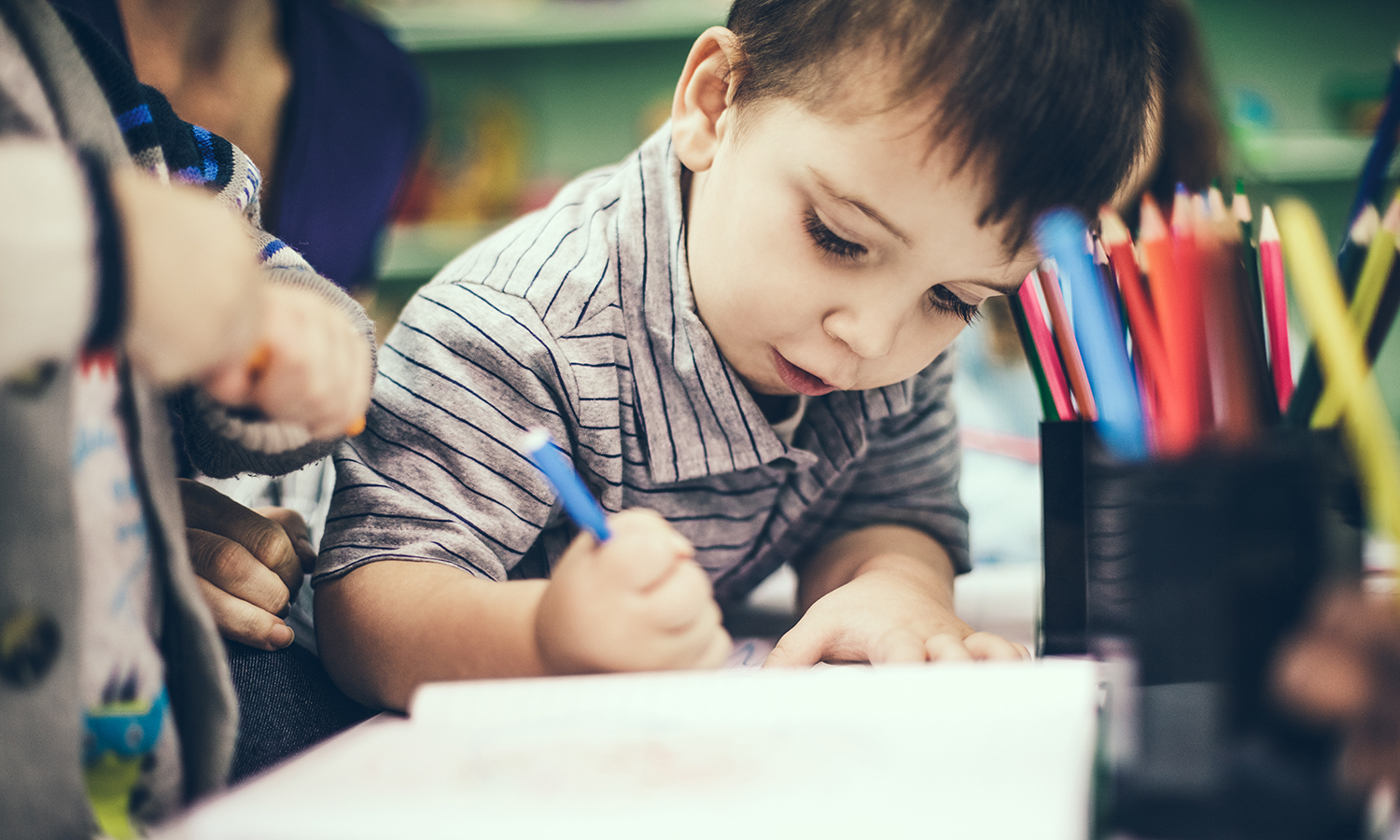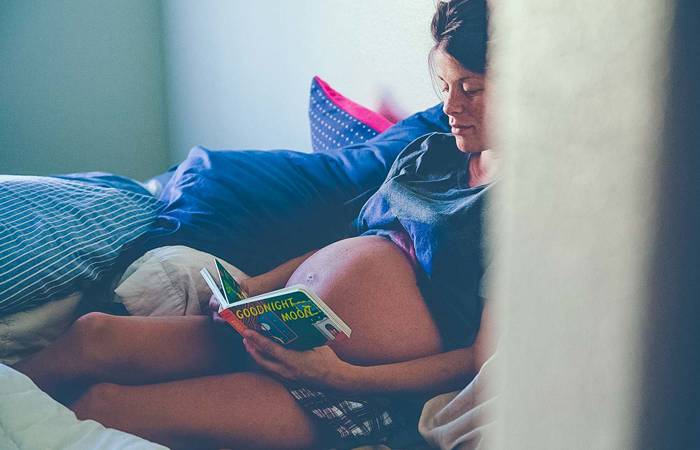Like what you see?
Sign up to receive more free parenting advice.
Thank you for subscribing to our newsletter!
Early Learning

Credit: iStock.com/alvarez
Long before our children learn about the alphabet and begin to write, drawing plays an important part in their literacy.
In her book, This concept has been explored in a book, Understanding and Supporting Young Writers from Birth to 8 by Associate Professor in literacy studies at Charles Sturt University, Dr Noella Mackenzie says drawing from a young age helps build literacy.
Dr Mackenzie explains that learning about writing starts long before children begin primary start school. They start with talking and drawing and Dr Mackenzie believes if we value these two modes of communication, we can build on both of these skills.
“It’s important to give drawing the same kind of recognition that we give exploration of oral language. We encourage children to talk as we recognise their ‘babble’ from early on. For example, parents can have conversations with a child who is ‘babbling’,” Dr Mackenzie says.
“Mum or Dad will talk, the child will ‘babble’ and it’s recognised as a conversation and that encourages the child to play around with conventional oral language.
“It’s similar with drawing – a child can experiment with what we refer to as ‘mark making’, from a very young age. For example, when a child draws on their breakfast tray or if there’s something like flour on the kitchen bench, a young child will instinctively put hands in there and make patterns. So we need to engage with children while they’re doing this, saying ‘Oh, you’re drawing me a picture!’.”
Provide children with crayons and pencils for small hands
Dr Mackenzie advises parents to provide young children with legitimate mark marking tools, such as good quality early crayons, textas and pencils designed for small hands.
“Children with older siblings have an advantage because they have access to these tools. We need to give all children access to these tools and encourage them to play around with the notion of mark making,” Dr Mackenzie says.
“The ways that kids make meaning and record their worlds through drawings is an important step in developing writing and, therefore, in developing literacy.
“It’s actually very important for our children’s future as ‘text creators’. If we think of them as ‘text creators’ rather than just writers, it’s easier to understand the importance of incorporating the visual images – the drawings and paintings, and their talk – as well as their developing linguistic skills in written language.”
It’s important to give drawing the same kind of recognition that we give exploration of oral language. We encourage children to talk as we recognise their ‘babble’ from early on. For example, parents can have conversations with a child who is ‘babbling’.Dr Noella Mackenzie
Stay up to date with the latest news and articles from First Five Years
Thank you for subscribing to our newsletter!
Draw, Talk, Write
The key message of Dr Mackenzie’s book is they need to build on what children already know and can do when teaching them to write.
“Teachers need to integrate children’s prior experiences into the learning process. One of the strategies I describe in the book is called ‘Draw, Talk, Write.’ Through this system, we value and utilise existing systems of communication that children possess, and writing becomes an extension of these existing forms rather than a replacement.
“Sometimes children get the message that writing with words on paper or a screen are more important than their other forms of communication, but this isn’t the case. These are essential building blocks for writing in a conventional way.”
Dr Mackenzie is delivering the ‘Draw, Talk, Write’ strategy to 26 schools throughout New South Wales.
“In a multimodal world, our text creation process is a mix of modes and visual images. In today’s world, a multimodal text for a young child involves them drawing something that an adult might think is scribble, but when you ask questions about their drawing, they tell you all about it,” Dr Mackenzie says.
“It’s the same with children in classrooms and preschools; if the teachers engage with the children as they’re drawing, and I encourage teachers to draw as well, children are like sponges, they want to do what everyone else is doing.
“So we need teachers to understand that drawing is an important mode of communication or text creation. It’s not just a precursor to writing real words, it’s a mode in its own right.”
Creating sophisticated visual texts through drawing
When drawing is encouraged, Dr Mackenzie believes children can create quite sophisticated visual texts, and this enables them to instinctively start to add labels and words.
“What I encourage teachers to understand is that doesn’t mean we diminish the drawings, we keep the drawings going and they’ll become more sophisticated. But we need to allow children to add written texts and teach them how to do that.
“This isn’t being done in many schools as it’s seen as ‘That’s just something kids do instinctively'. But the reality is that the average child stops drawing around the age of seven unless we continue to encourage them to draw.
“How do we encourage them? We encourage it by valuing it. It saddens me to think that many children come to school drawing and talking but then we focus so much on the written word that the talking and drawing take second place.
“Then, as children get to Grade three, teachers say, ‘Now we want you to create a multimodal text’ and many of them aren’t sure how to do this.”
So how do we get our children to continue with drawing instead of making it ‘all about the words?’ Dr Mackenzie says if we keep encouraging children, they’ll develop a repertoire of modes of communication.
“An example I saw in a school recently involved a girl who couldn’t speak much English as it wasn’t her first language. But when teachers started to get her to draw her responses to text that the teacher had read aloud, the drawing showed that the child’s receptive language was actually brilliant.
“If you think of the logic of it - if a child is still learning the alphabet and they only know six words, its very hard to write a complex text.
“But if you ask them to draw a picture, add some words that they’re learning and then tell you about their drawing, then you’ll get a very complex text.
“Writing is a key literacy skill for children to learn, and we need to ensure that teachers have the skills to develop that literacy in our children – they need to understand the importance of those foundations that children already possess when they enter the classroom.”







